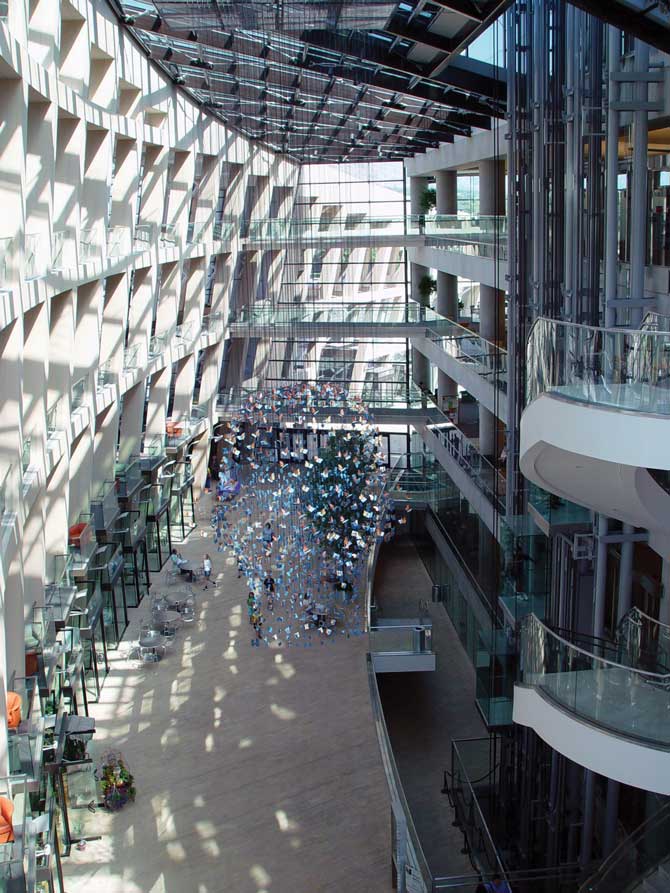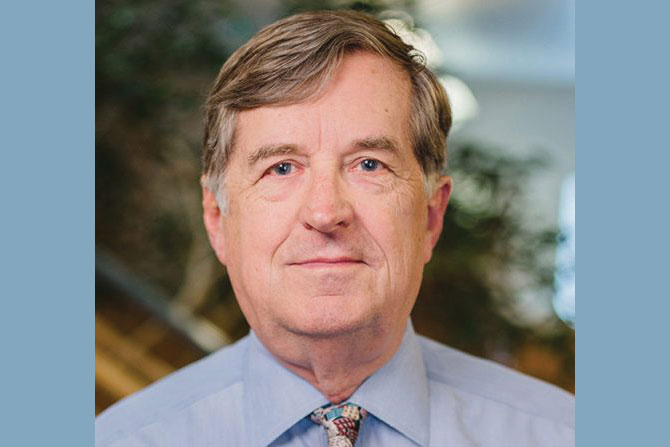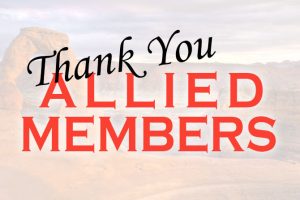Niels Valentiner is the founding principal of VCBO Architects. A Denmark native, Niels immigrated to the U.S. in 1965, attended BYU, and after his mission in Denmark with the LDS Church, he transferred to the University of Utah, graduating in 1973. He started Valentiner Architects right out of university, and has grown his firm to ninety professionals in two offices, Salt Lake and St. George. Almost 50 years since Valentiner and Associates opened, Niels continues to work at his profession and avocation – Choice Humanitarian, a non-profit whose mission is to eliminate extreme poverty.
What prompted you to become an architect?
I grew up in Denmark. I was in the last year of Gymnasium, and we were supposed to have some idea where we would go after that; we should interview a person in that profession. I had some interest in architecture, but more in art — I was studying painting and sculpture. I talked to an architect. As we were contemplating immigrating to the United States, I asked him if he thought I should study at the Academy in Denmark or in the United States? He said he thought the United States would be a good experience. The path of architecture was set at that point.
I was planning to go to UC Berkeley, but Berkeley was a big (political) mess in 1965. So, as I had connections with the Mormon Church, I went to BYU for the first year and a half. In ’67, I went back to Denmark on an LDS mission, then came back and transferred to the University of Utah. I finished my degree in art, then did a master’s degree in architecture.
While I was in school, I worked for Don Panushka. I went to talk to him, and Don said, “Show me some of your work.” Of course, I had nothing. I went home and asked a friend who was in school a year or two ahead of me to give me some plans I could copy over. I copied them over, then came back a week later and showed Don. (This was) very bad, but he needed someone to do drafting so I worked with him for a while. After that, I worked for Enteleke, as well as with a group of other architects.
When did you decide to form Valentiner Architects?
After graduation in ‘73, I started the firm right out of school. I took the one-week exam and hung my shingle out on the door — Valentiner and Associates. I had to look important, so I put “Associates” after Valentiner. That’s the problem when you start a firm: you have to look like somehow you know what you are doing.
How did you do it? How did you look like you knew what you were doing?
I must admit I would not recommend starting out that way, right out of school. It would have been smarter if I had gotten more experience: five or ten years. I had two or three years working for architects that qualified me to get my license, so I had some of that background. I would not recommend that — but that is what I did. I had to learn very quickly how to put drawings together. Back then, everything was by hand. We designed simple stuff.
How did you find your clients?
I had some connections with developers and some others. One of my first real jobs was with a builder in Ogden who was doing a design-build credit union at Hill Air Force Base.
That became the first America First Credit Union, and the project turned into a relationship.
We went to planning meetings every month for over two years planning their new headquarters and hoping that they would give us the job. Well, we got it. It was our first major office building. It was mostly just connections with people.
And then?
What Terracor did for realtors and developers is what Environmental Design Group did for architects. They started something that was way before its time and overly ambitious: Stansbury Park and Bloomingdale, and all those projects. That was the beginning of architecture and development on a large scale in Utah. Other firms spun off of that group.
Roger Boyer spun off and started his company. We started working together when he was doing his first little office buildings, and I was scrambling. We did projects for many years and still do.
That is how you start; bump into the right people at the right time, and hustle.
What are you most proud of?
I don’t look back. I look forward to doing a project, then I pass it along and move on. What intrigues me about architecture is the ability to put it all together: getting the client, getting financing, getting a site, come up with all the pieces that make it a project, then the design and everything comes into it, and then construction, then be done with it. It is very intriguing to me — the process of making architecture — that is probably what built the firm.
The smartest thing I did was hire and bring people to work with that were smarter than me. People with different backgrounds, different strengths, different abilities, that is really why VCBO is where we are.
How did that all happen?
Back then, firms were very small. A firm of 30 was big. All of us were just scrambling to get little pieces of projects.
At a point, I got smart and said, how do I get strength, diversity? I was primarily involved in development, office buildings and commercial work, no institutional, no schools. Steve Crane and I had casually met each other. We went to lunch, and I said, “Steve, you have a little firm, and I have a firm, and we both need to grow if we are going to compete with the big guys out there.” Over several months we decided that he would roll his firm into ours. We created a partnership: me, Steve, Peter Brunjes and Sean Onyen, who were also working with me. Steve brought schools with him and some other clients. That was really the beginning of VCBO.
I kept 51%. I wanted to make sure that if I made mistakes, I could get rid of them. They knew that. We talked about it and said, “This is going to be a trial here.” We did that for a year or two, but I soon realized that I shouldn’t be a majority owner; it had to be all equal. We are now into our third generation of partners.
What are some of the struggles you had to overcome?
Meeting the demands of clients, but that is always going to be there. The other side is keeping the firm growing. Growing a firm is not easy because of the way people interact with each other. Today all the major firms, I think, are struggling — moving from one generation to the next to the next.
You start a firm — you’ve got to have the fire. You have to know that there is no payroll tomorrow unless you get a project and you do well. In the beginning, our biggest problem was that we had no resume to speak of. Today, we can show thousands of projects, major projects.
Now, the problem is having the initiative to keep developing the company and making people in the firm see that. The biggest challenge is moving from us old-timers who just had to do it, to the new generation who wants a little more freedom. They have to have the fire in their belly and understand that to own a firm and grow it, you have to have sleepless nights, wondering if what we are doing is right or wrong.
What have you seen in terms of the evolution of architecture in the fifty years you have been practicing?
There has been huge development. Everything we did back then was by hand, using colored pencils and markers, putting presentation drawings and models together. Model making was a big thing; I used to spend many hours up in East Canyon gathering yarrows — we used them for trees on our models. Nobody does that anymore now.
It was very hands-on. It was a lot simpler in the design and communication of drawings. Most firms were no larger than ten, twenty people. That has evolved with AutoCadd, with digital communication. How we deliver architecture, how we design, how we visualize, how we communicate, all those are entirely different than it was 30 or 40 years ago.
It has been a tremendous development: a very positive one, I think. We can communicate so much better. Just look at the drawings; we only had thirty pages, now we have three hundred pages for the same project. We have very sophisticated clients who are very focused on their particular sliver of a business. Clients think just because you can do an elementary school doesn’t mean you can do a high school, and just because you can do a high school doesn’t mean you can do elementary school. That is ridiculous, but it is getting that focused.
I think (as an architectural community) we have done very well. We are not over the top with iconic projects, but have developed the Wasatch Front very reasonably. I think altogether we have been very respectful as architects. We have respected the community, respected the mountains, respected the environment. And there has been a sense of preserving history. But we all have to do better. There is a lot more to do.

What is a good building?
Architecture needs to be relevant to where it is, what it is doing, what it is trying to achieve, and what it adds to that whole environment. A good building needs good clients — without a client that is able and willing to visualize with you can’t go that next step; to create and design something that is relevant, that is in context to what you are doing.
Salt Lake City Library was one of our very important projects, working with Moshe Safde. The context was to create a living room for the community that everybody can come into and feel comfortable. One reason it was successful was Nancy Tessman, the library director. She got the board bought off on doing a unique building.
I said to her, we have to be careful, we have got to control this. We have so many homeless people we don’t want to come in and have them take their morning shower and wash. Nancy said, “Niels, homeless people are part of our community; they belong here too. That was a real moment for me. I was like, “I want to keep this beautiful building away from people that might destroy it.” Instead, she opened the door and said, “Come in.” Guess what? Those homeless people sitting on the carrels up along the wall are in there and sit there and read every day all day long, and they are more a part of that building than maybe other people. Now that is architecture to me; it is socially responsible, environmentally responsible; it is in context.
What advice would you have for a young architect starting out?
Not to do what I did. Find out about architecture. I think in many ways it is really to explore the world, maybe go somewhere else and practice: South America, Europe. Get your mind open — go out and get away from just the narrow scope we live in. If you live in Utah, you see Utah as the world. There are people on the other side of the mountain.
Then, find a niche where you are strong: a certain design, a certain direction, a certain social, psychological emphasis that you want to be involved in. It can be all parts of architecture – it can be design, it can be technical, it can be in spec writing, it can be whatever. Create and become an expert in that, because that is what architects in the world need.
To watch the full interview, please click below.
https://www.youtube.com/watch?v=gqKFVWHObp8






